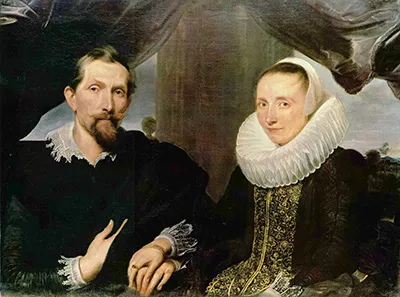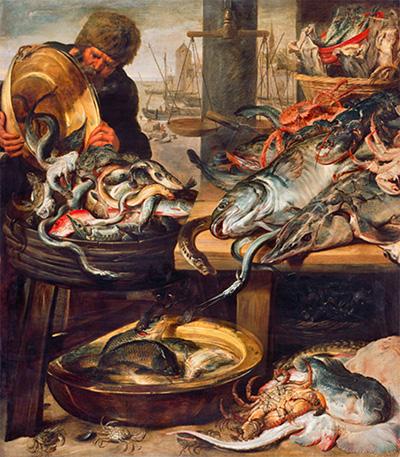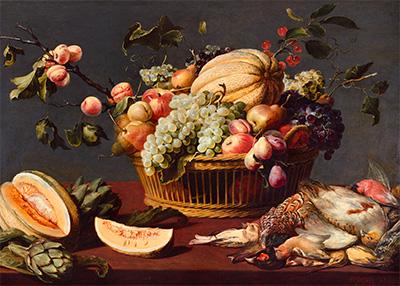Who was Frans Snijders?
 Frans Snijders and Margriete de Vos Frans Snijders and Margriete de Vos Frans Snijders (1579–1657) was an Antwerp draughtsman and painter, who established his reputation in the first half of the 17th century, primarily as a painter of still lifes and animals. His keen eye, knowledge of nature and original compositions continued to inspire a great many artists until well into the 19th century. In 1611, Frans married Margriete de Vos (died 1647), sister of the animal painter Paul (1595–1678) and the portraitist Cornelis de Vos (1584–1651). The couple lived in Keizerstraat from 1622 onwards, purchasing a patrician’s residence there named De Fortuyne. Frans and Margriete Snijders were Nicolaas Rockox’s neighbours for almost 20 years.
Frans Snijders and Margriete de Vos Frans Snijders and Margriete de Vos Frans Snijders (1579–1657) was an Antwerp draughtsman and painter, who established his reputation in the first half of the 17th century, primarily as a painter of still lifes and animals. His keen eye, knowledge of nature and original compositions continued to inspire a great many artists until well into the 19th century. In 1611, Frans married Margriete de Vos (died 1647), sister of the animal painter Paul (1595–1678) and the portraitist Cornelis de Vos (1584–1651). The couple lived in Keizerstraat from 1622 onwards, purchasing a patrician’s residence there named De Fortuyne. Frans and Margriete Snijders were Nicolaas Rockox’s neighbours for almost 20 years.
Career
Frans was a pupil of Hendrick van Balen the Elder (1573–1632) and Pieter Brueghel the Younger (1564–1638). Snijders’s acquaintance with the latter’s brother, Jan Brueghel the Younger (1568–1625), was however to prove even more important. Jan paid much greater attention to detail than Pieter did, a talent that Snijders shared, and Jan became Frans’s mentor. Snijders was the teacher in turn of Joannes Fyt (1611–1661). Frans enrolled as an independent master in the Antwerp Guild of St Luke in 1602 and was later appointed its dean in 1628. Snijders spent the period 1608 to 1609 in Italy, during which time he worked in Rome and Milan. He subsequently settled in Antwerp, where he established himself as a painter of still lifes and animals and as a master of powerful hunting scenes. He travelled to the Northern Netherlands several times in the 1640s to carry out commissions.
His art
 The FishmongerSnijders displayed great variation in his painting and experimented with new themes. He developed market scenes, added a Baroque touch to still lifes and painted remarkable, highly dynamic hunting scenes. He represented animals, whether dead or alive, with immense realism. Equally striking, however, is the tactile sense he gave the objects in his compositions. The structure of his paintings is geometrical and maintains the balance between colour and design. Other artists frequently asked Snijders to add still lifes and animals to their works. He collaborated in this way with Abraham Janssens (1567–1632), for instance, Cornelis de Vos (1584–1651), Jacques Jordaens the Elder (1593–1678) and Peter Paul Rubens (1577–1640). The speed of his success and his subsequent position at the top of the social ladder are evident from, amongst other things, the purchase of his house on Keizerstraat. Snijders was not only a well-known figure in Antwerp, but also a sought-after painter in England. The Archdukes Albert and Isabella likewise owned paintings by him.
The FishmongerSnijders displayed great variation in his painting and experimented with new themes. He developed market scenes, added a Baroque touch to still lifes and painted remarkable, highly dynamic hunting scenes. He represented animals, whether dead or alive, with immense realism. Equally striking, however, is the tactile sense he gave the objects in his compositions. The structure of his paintings is geometrical and maintains the balance between colour and design. Other artists frequently asked Snijders to add still lifes and animals to their works. He collaborated in this way with Abraham Janssens (1567–1632), for instance, Cornelis de Vos (1584–1651), Jacques Jordaens the Elder (1593–1678) and Peter Paul Rubens (1577–1640). The speed of his success and his subsequent position at the top of the social ladder are evident from, amongst other things, the purchase of his house on Keizerstraat. Snijders was not only a well-known figure in Antwerp, but also a sought-after painter in England. The Archdukes Albert and Isabella likewise owned paintings by him.
Collaboration with Peter Paul Rubens
Frans Snijders had a very good relationship with Rubens. What he most learned from this master was how to intensify the dramatic content of his paintings and to make his canvases more monumental, which heightened the drama even further, to impressive effect. Frans and Peter Paul were both in Italy in 1608, and it might actually have been there that they first met. Either way, they certainly worked together several times. In the period 1636 to 1638, Snijders was one of the artists (Cornelis de Vos was another) who painted the mythological decorations under Rubens’s supervision for King Philip IV of Spain’s hunting lodge, Torre de la Parada, near Madrid. Snijders contributed 60 hunting scenes and animal paintings. Snijders and Rubens received a further commission from Philip IV in 1639 to supply an additional 18 paintings.
Friendship with Nicolaas Rockox
 Still Life, signed, 1616Snijders got on well with Nicolaas Rockox. Both men had an art collection: Rockox owned some 80 paintings, including a still life by Snijders – a ‘little basket with grapes’. The burgomaster had already made his name as an antiquarian and might have helped Snijders in 1616 when he acquired five plaster casts from the estate of Cornelis Floris III, including busts of Marcus Aurelius and Hercules. The purchases testify to his interest in classical antiquity and Neostoicism, as developed by the humanist Justus Lipsius. Independently of one another, Snijders and Rockox each had Anthony van Dyck paint their portraits in 1621, highlighting the important status they enjoyed. Rockox also invited Snijders to witness the final codicil to his will. And, lastly, both men chose the Minorite church as their final resting place. Rockox and Snijders might have died over 400 years ago, but their houses still testify to a fascinating piece of Antwerp history.
Still Life, signed, 1616Snijders got on well with Nicolaas Rockox. Both men had an art collection: Rockox owned some 80 paintings, including a still life by Snijders – a ‘little basket with grapes’. The burgomaster had already made his name as an antiquarian and might have helped Snijders in 1616 when he acquired five plaster casts from the estate of Cornelis Floris III, including busts of Marcus Aurelius and Hercules. The purchases testify to his interest in classical antiquity and Neostoicism, as developed by the humanist Justus Lipsius. Independently of one another, Snijders and Rockox each had Anthony van Dyck paint their portraits in 1621, highlighting the important status they enjoyed. Rockox also invited Snijders to witness the final codicil to his will. And, lastly, both men chose the Minorite church as their final resting place. Rockox and Snijders might have died over 400 years ago, but their houses still testify to a fascinating piece of Antwerp history.






